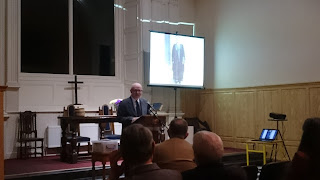1918 – Why Did Sinn Fein Win the Elections?
A lecture by Dr Pat McCarthy to the Waterford Archaeological and Historical Society
The Waterford Archaeological and Historical Society lecture season for 2018 and 2019 continues on Friday 30th November with a lecture at 8 pm in St Patrick’s Gateway Centre, Waterford by Dr Pat McCarthy titled ‘1918 – Why Did Sinn Fein Win the Elections?’.
In the general election of December 1918 Sinn Fein swept to an unprecedented and overwhelming triumph. In an electoral landslide the Irish Parliamentary Party, for so long the representative of Irish nationalism, was swept aside. Sinn Fein won every seat outside of Ulster except for Waterford City which remained loyal to the Redmonds.
The triumph of Sinn Fein may seem to have been unavoidable in retrospect. Building on the party’s four by election victories in 1917, it would appear that the Sinn Fein bandwagon was unstoppable. That is far too simplistic an interpretation of the complex events of 1918. Remarkably the Irish Parliamentary Party won three by elections early in 1918. These results came as a shock to the Sinn Fein leadership and John Dillon, the new leader of the Irish Parliamentary Party declared: “we have Sinn Fein on the run”.
However, the decision of Lloyd George and the British government to introduce conscription to Ireland changed the situation completely. Nationalist Ireland, the political parties, the Catholic Church and the trade union movement united in a remarkable show of defiance. Faced with such a united front the British government soon abandoned its plans but conscription had reinvigorated Sinn Fein. That party now had a branch in every parish while the Irish Parliamentary Party collapsed. No wonder that the eminent historian A. J. P. Taylor declared that April 9th, the day that the conscription bill was introduced into Westminster as “the day that England lost Ireland.” This lecture will look at the events of the historic year from both national and Waterford perspectives.
Pat McCarthy, is a native of Waterford city and past pupil of Mount Sion, he holds a PhD and an MBA from UCD and worked for many years in the pharmaceutical manufacturing sector. He has lectured and published extensively and is the author of The Irish Revolution 1912-23, Waterford (Four Courts Press, 2015), Waterford and the 1916 Rising (Waterford City and County Council, 2016), The Redmonds and Waterford, a political dynasty 1891-1952 (Four Courts Press, 2018) as well as papers in the Irish Sword (the Journal of the Military History Society of Ireland) and Decies (the Journal of the Waterford Historical and Archaeological Society) on a broad range of subjects.
This lecture will appeal to anyone interested in the history and politics of Waterford and Ireland in the revolutionary period. Admission to the lecture is €5 (students €2.50), but is free for members of the Waterford Archaeological and Historical Society.


































